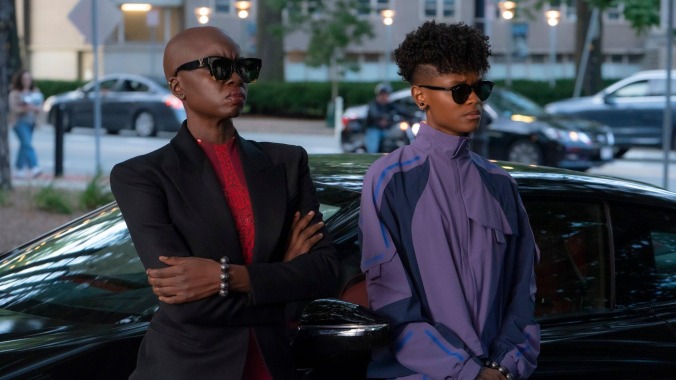Black Panther: Wakanda Forever passes the torch while processing unimaginable loss
Ryan Coogler's sequel doubles down on virtually everything that made Black Panther so memorable, while also wrestling with the absence of its star

Who could possibly replace Chadwick Boseman as Black Panther? Upon its release November 11, this is the question, both in real life and on film, that Black Panther: Wakanda Forever attempts to answer, with varying degrees of success. A meditation on grief that aspires to exercise as many emotional and intellectual muscles as the physical ones that ripple across its superheroes, Ryan Coogler’s follow-up to the ground-breaking blockbuster Black Panther is overlong and overstuffed, precisely in the way a thoughtful filmmaker leverages his earlier success for extra creative leeway—for good and ill. Yet without a proxy, or heir, to both the character’s authority and the actor’s charisma at the center of its story, Wakanda Forever cannot help but fall short of its predecessor, no matter how insurmountable a challenge that already might have been, even without an unimaginable loss at its center.
In the wake of the unexpected death of T’Challa (the late Boseman), the nation of Wakanda goes into collective mourning. Queen Ramonda (Angela Bassett) once again commands the throne, navigating both requests from world powers to share her country’s advancements and the grief of her daughter Shuri (Letitia Wright), who throws herself into her inventions after failing to save her brother. But when a U.S. oceanic outpost is destroyed during an expedition to mine Vibranium, the core element of Wakandan technology, everyone in the world assumes Ramonda’s regime is responsible—including Namor (Tenoch Huerta), the king of the underwater civilization of Talokan, who is determined to protect his realm at all costs.
Brokering a temporary truce with the Talokans, Shuri volunteers to find the scientist who engineered the mining device that threatened Namor’s kingdom. She and Okoye (Danai Gurira) identify Riri Williams (Dominique Thorne)—a brilliant MIT student who did not know who she was selling her technology to, or for what purpose—and bring her back to Wakanda for protection. But when Namor is not satisfied by Ramonda’s promises to stop Williams from developing future devices that will help the rest of the world acquire Vibranium, he announces plans to wage war against Wakanda as a prelude to taking over the entire planet with his massive underwater armies.
Without knowing for certain, it seems possible that the Namor/Talokan story in Wakanda Forever unfolds exactly the way it would have without Boseman’s tragic and untimely passing—and may explain why the film is understandably, if unnecessarily, long. Although a bit of cognitive dissonance is required to process the very real death of the first film’s lead actor in a world where characters come back to life with an ease that feels especially cavalier, Coogler treats Boseman’s absence with extreme sensitivity and reverence, using his characters’ sadness to help viewers, and one imagines the filmmakers, work through their own. A funereal tone hangs over every scene, and gives the motivations of its new villain added dimensions as he and the Wakandans engage in uncommonly complex—and thrillingly unresolved—discussions about military might, cultural sovereignty, and the balance between justice and vengeance.

 Keep scrolling for more great stories from The A.V. Club.
Keep scrolling for more great stories from The A.V. Club.